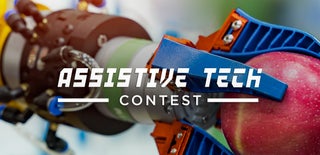Introduction: Assistive Belt
The following project I present you is an ultrasonic belt I think it could help visually impaired people to detect obstacles.
The belt has been designed to use while the people is walking (maximum speed about 3,1 mph) or in narrow environments
The circuit for this project has been fully designed with TINKERCAD Circuit.
I hope be useful for somebody.
Supplies
- One money belt
- One little belt bag
- Two ultrasonic sensors HC-SR04
- Two vibration motors
- One ARDUINO NANO or compatible microcontroller
- Two 5 mm blue leds
- Two banana plug connectors
- Two banana sockets jack connectors
- One boost converter (DC-to-DC)
- One micro USB Lithium battery charger
- One Lithium Battery (3,7 V, 1800 mAh)
- Wires
Step 1: How It Works
In this project I have mounted two ultrasonic sensors HC-SR04 and two vibration motors in the front and the rear of a money belt everything controlled by an ARDUINO NANO.
When an obstacle in front or rear is detected by the sensors, the vibration motor begins to vibrate at a frequency proportional to the distance measured.
The assistive belt can work in two different mode.
In the first mode, the default mode, the maximum detection distance is 40" and in the second one is 80". If an obstacle is detected beyond these distances the vibration motor will not vibrate.
As I have mentioned at the beginning the belt has been designed to use while the people is walking.
The first mode is thinking to use in narrow enviroments with a lot obstacles around, as our home.
The second one is thinking to use while is walking at a maximum speed about 3.1 mph.
Of course you can easily change these values.
A little push button installed in the front of the belt switches between the two modes. When it is pressed both vibration motors vibrate and stop during 100 ms four times to confirm the mode change.
Step 2: TINKERCAD Circuit
The picture shows you the circuit wiring. There is a couple of things to take into account in this design:
- To simulate a three pins vibration motor I have used a two pins TINKERCAD one with a NPN transistor to control it.
- The two blue leds, one in the front and the other one in the rear of the belt has been installed only for testing purpose. When one motor begins to vibrate its belonging led lights up.
You can copy this TINKERCAD circuit here
Anyway in the next step I have included an embed version of the circuit where you can simulate it and download the ARDUINO code.
Step 3: TINKERCAD Circuit Simulation and ARDUINO Code Download
To begin the simulation just push the "Start Simulation" button:
- To place an object in front of one sensor, just click over it and move the point to the desire distance.
- To switch between the two function modes (40"/80"), just click the push button.
To see the block code and download the ARDUINO code just push the "Code" button.
Step 4: Complete Assistive Belt Circuit
Attachments
Step 5: Wiring the Power Supply
Because the space in a belt is limited, I have mounted the power supply in a external little belt bag.
I have used the following:
- One little belt bag
- Two banana plug and socket jack connectors
- One lithium battery 3,7 V 1800 mAh
- One micro USB lithium battery charger
- One boost converter (DC-to-DC) that steps up voltage while stepping down current from its input (supply) to its output (load). In this case from 3,7 V to 5 V
As you can see in the pictures I have marked the positive connectors with a velcro adhesive tape to easily identify them.
Step 6: Wiring the Circuit
To wire the circuit I have done the following:
- Wiring the sensors and the vibration motors
- Wiring the ARDUINO NANO or compatible microcontroller
- Open two little holes for each sensor in the money belt
- Install the push button in the front of the money belt
- Solder two wires to the push button and connect them to the ARDUINO NANO
- Open one little holes in the rear of the money belt to pass through it the power supply wires with the banana connectors
- Install inside the money belt all the devices and wires
Step 7: Testing the Assistive Belt
As I mentioned above, to test the belt I have installed two 5 mm blue leds in the front and the rear of the belt.
If the led lights the vibration motor is vibrating. These leds will allow us to test the belt easily.
In the first video you will see the belt on my working table, using the power supply installed in the little bag and testing the two function modes (for this test the maximum distances detection are 10"/15").
In the second one you will see how it works the assistive belt in a real environment. In this test the belt is working with a maximum distance detection of 10".

Participated in the
Assistive Tech Contest














